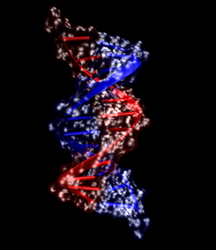Cargo delivery for gene therapy success
Gene therapy is the means whereby genetic material is inserted into cells or tissues where it can be used to treat a disease. This can take the form of replacement, inactivation or introduction of a completely new gene or genes. One of the main stumbling blocks however has been how to actually deliver the appropriate genetic agent where it can be effective. In order to find an alternative to viral transfecting agents for delivery of the so-called cargo, the CPP project investigated the use of cell penetrating peptides (CPPs). The team based at the Laboratory of Molecular Biology in Cambridge specifically focused on using conjugated CPPs to facilitate cargo uptake and passage to the desired destination in the cell. The scientists developed methods to link CPPs chemically to a range of antisense oligonucleotides, peptide nucleic acid (PNA) and short interference RNA (siRNA). All these cargo molecules have the potential to modulate gene activity. For example, antisense oligonucleotides modify gene action through a steric blocking mode of action. Observations showed that release into the cytosol or nuclear areas of the cell, was difficult to achieve. Delivery to these sites was shown to be structure dependent. However, the team found that this could be facilitated by use of chloroquine, the anti-malarial agent which acts as an endosomal release agent. Action was also induced when CPPs were linked to siRNA. In this case, reduction of expression of the p38 MAP kinase was observed, a pathway implicated in many inflammatory conditions. Once in the cell, the conjugates were found primarily in membrane bound structures, usually endosomes. An ingeneous method of testing used a Tat HIV-1 system where activity is only achieved when steric block cargo enters the nucleus and binds to its RNA target. The protocols developed as part of this research could constitute a valuable part of splicing of genetic sequences and consequent gene correction. The findings of this research form a solid basis on which anti-viral and anti-cancer therapies could be based.







